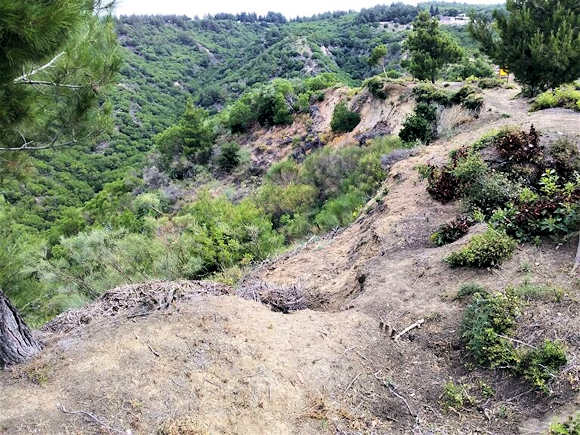 |
| The Front Line at Steele's Post |
About 1,250 yards inland and east of Anzac Cove was a position named after Major Thomas Steele of the 14th Battalion, who took command at the site on 27 April 1915. Steele's Post was the southern-most of three such positions—Quinn's, Courtney's, and Steele's—that occupied precarious but critical "Eastern Front" positions along the lip of Monash Valley, in the heights above ANZAC Cove. Monash Valley ran right into the heart of the ANZAC position and, as Shrapnel Valley, continued on down to the beach at ANZAC Cove.If the enemy came to dominate this valley behind Steele's Post, on which they depended for reinforcements and supplies, defeat would have been inevitable for the forces at ANZAC. Due to the sloping character of the position, and the higher and flanking terrain occupied by Turkish troops, the men at Steele's Post were under enemy observation and exposed to sniper and artillery fire for the entire campaign at ANZAC. Historian Charles Bean described the position as a steep niche "of which the top was a sheer landslide of gravel where a man could scarcely climb on his hands and knees."
 |
| Red Arrow Shows Position of Steele's Post Click on Image to Enlarge |
The position was taken on the first day of landing at ANZAC (25 April 1915) and kept in Allied possession until the evacuation of the peninsula. It held out against ferocious Turkish counterattacks in late April and during the Turkish offensive at the end of May. From Steele's, several tunnels were pushed out toward the Turkish trenches opposite, and some of these were used in a failed and disastrous attack on German Officers' Trench in the small hours of 7 August 1915.
 |
| The Almost Unbelievable Precariousness of the Position |
One of the men who served at Steele's Post and died there, Sergeant William Henry Cooling of the 26th Battalion, has left a vivid description of what life was like on the front line at ANZAC in a letter home. From Enoggera, Queensland, Australia, Sgt. Cooling died of wounds on 22 October 1915 at 20 years of age. His grave is located in the Embarkation Pier Cemetery at Gallipoli.
 |
| Sergeant Cooling |
Our dugouts are in the side of a hill. Each two or three men do their own cooking and we are having the time of our lives...So far we have had two men killed and one wounded by stray bullets. We get very good food including bread two or three times a week; jam, fresh meat, about twice a week; bacon every day; rice, prunes or raisons now and again; biscuits every day - large hard ones - tea, sugar, tinned milk...so you see we don't fare too badly...Three days ago the Turks sent a jam tin into our trenches with this message on it: "If you are not off the Peninsula in three days we will blow you off". The three days are up and we are still here and likely to stay".
 |
| Steele's Post Today |

Good men wasted in an ill starred campaign from the get go, starting with the Royal Navy getting snuffed, losing the element of surprise. I don't know for a fact only from what I've heard, that the British command wasn't up to the task, some saying incompetent.
ReplyDelete